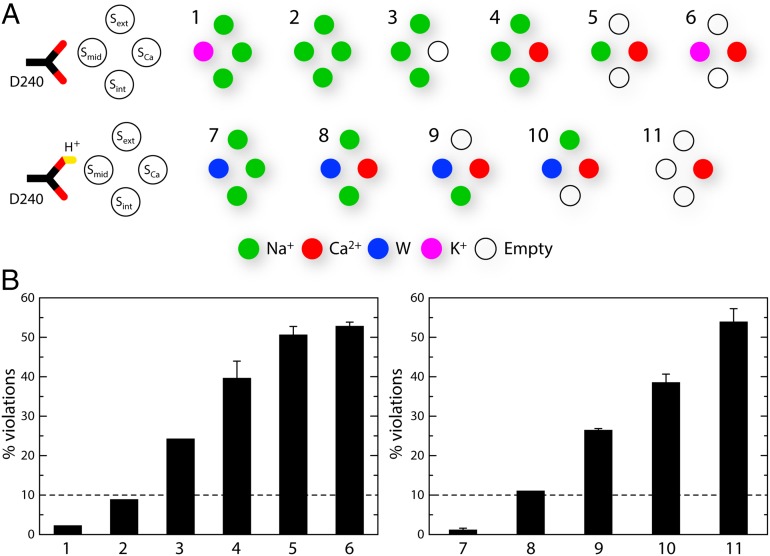Fig. 2.
Comparative analysis of alternative ion occupancy configurations of the binding sites in NCX_Mj, based on the consistency between simulation and crystallographic data. (A) Specific ion configurations considered in this study. Note that when an ion occupies Smid, D240 is ionized; if Smid is empty or occupied by water, D240 is protonated. (B) Geometric perturbation of the experimental structure induced by each of the ion configurations simulated. For each simulation, we analyzed a set of 92 interatomic distances between side-chain and backbone atoms lining the binding sites (Fig. 1B), and identified those that are inconsistent with the X-ray structure, which we refer to as violations. A distance violation occurs when the time-averaged value of this distance over the length of the simulation differs from that in the X-ray structure by more than two times the SD of the simulation average. A lower percentage of violations therefore implies better agreement with the experimental structure. The values plotted were obtained with simulations using the standard CHARMM27 force field. The three configurations with a percentage of distance violations smaller than 10 were also simulated with an optimized version of the force field (SI Methods and Figs. S3 and S4). The resulting distance violations were 1.1%, 2.2%, and 4.4%.

